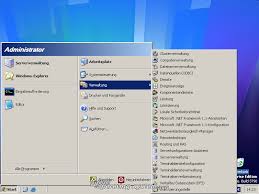
1) When installing terminal services for win2000 u r prompted to select application server functions or administrative functions sets can be installed sequently on one server but it performs only one function at one time. But in 2003 still distinguishes between application and administrative services but installation and management are now consolidated. 2) In Win 2000 server we can apply 620 group policies but in 2003 we can apply nearly 720 so Win2003 server is more secure than win 2000 server. 3) In 2000 we cannot rename domain whereas in 2003 we can rename Domain. 4) In 2000 it supports of 8 processors and 64 GB RAM (In 2000 Advance Server) whereas in 2003 supports up to 64 processors and max of 512GB RAM. 5) 2000 Supports IIS 5.0 and 2003 Supports IIS6.0 6) 2000 doesnâ?Tt support Dot net whereas 2003 Supports Microsoft .NET 2.0 7) 2000 has Server and Advance Server editions whereas 2003 has Standard, Enterprise, Datacenter and Web server Editions. 8) 2000 doesnâ?Tt have any 64 bit server operating system whereas 2003 has 64 bit server operating systems (Windows Server 2003 X64 Std and Enterprise Edition) 9) 2000 has basic concept of DFS (Distributed File systems) with defined roots whereas 2003 has Enhanced DFS support with multiple roots. 10) In 2000 there is complexality in administering Complex networks whereas 2003 is easy administration in all & Complex networks. 11) In 2000 we can create 1 million users and in 2003 we can create 1 billion users. 12) In 2003 we have concept of Volume shadow copy service which is used to create hard disk snap shot which is used in Disaster recovery and 2000 doesnâ?Tt have this service. 13) In 2000 we donâ?Tt have end user policy management, whereas in 2003 we have a End user policy management which is done in GPMC (Group policy management console). 14) In 2000 we have cross domain trust relation ship and 2003 we have Cross forest trust relationship. 15) 2000 Supports 4-node clustering and 2003 supports 8- node clustering. 16) 2003 has High HCL Support (Hardware Compatibility List) issued by Microsoft. 17) Code name of 2000 is Win NT 5.0 and Code name of 2003 is Win NT 5.1 18) 2003 has service called ADFS (Active Directory Federation Services) which is used to communicate between branches with safe authentication. 19) In 2003 their is improved storage management using service File Server Resource Manager (FSRM). 20) 2003 has service called Windows Share point Services (It is an integrated portfolio of collaboration and communication services designed to connect people, information, processes, and systems both within and beyond the organizational firewall). 21) 2003 has Improved Print management compared to 2000 server. 22) 2003 has telnet sessions available. 23) 2000 supports IPV4 whereas 2003 supports IPV4 and IPV6. And Active Directory Differences-- -2000AD:-- 1. Only one million object can be created. 2. Universal group membership is not present. 3. Between parent and child, there is no built in trust .It is called as non-transitive trust. 4. There is only three AD partition, Domain partition, configuration partition, schema partition. 5. In Win 2000 server we can apply 620 group policies . 6. but 2k only Emergency Repair Disk(ERD) is there. 2003AD:- 1. 2 Million object can be created . 2. It is a new feature available in 2003. 3. Between parent and child, there is built in trust .It is called as transitive trust. 4. Same partitions are there in 2003, but one additional partition called Application directory partition is present. 5. but in 2003 we can apply nearly 720 so Win2003 server is more secure than win 2000 server. 6. Automated System Recovery(ASR) is there



